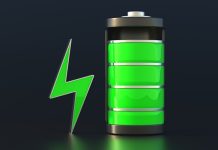
Researchers have developed an incredible solar-powered device that can clean dirty water and turn it into both clean drinking water and hydrogen fuel.
This breakthrough, coming from the University of Cambridge, is especially useful for areas without much infrastructure or resources, as it can work with any open water source and doesn’t need external power.
The device is inspired by the way plants use sunlight to make food, known as photosynthesis. Earlier versions of this technology, often called “artificial leaves,” could only produce hydrogen fuel from clean water.
However, this new device can handle polluted or seawater and still produce both clean water and fuel.
The device has been successfully tested with various types of water, including extremely polluted water, seawater, and even water from the River Cam in central Cambridge.
These exciting results are shared in the journal Nature Water.
Dr. Chanon Pornrungroj and Ariffin Mohamad Annuar, co-lead authors of the study, faced a challenge in merging solar fuel production and water purification.
Usually, water splitting, which breaks water into hydrogen and oxygen, needs very pure water. Any impurities can harm the catalyst or cause unwanted chemical reactions.
Their innovative design solves this problem. They created a photocatalyst and placed it on a special carbon mesh that absorbs both light and heat well. This mesh generates the water vapor needed for the photocatalyst to create hydrogen.
The mesh is also water-repellent, helping the device to float and preventing contaminants from reaching the catalyst.
An exciting aspect of this device is its efficient use of sunlight. “Solar fuels are usually made using a small part of the solar spectrum,” explains Mohamad Annuar. The team added a UV-absorbing layer on the device’s top for hydrogen production, while the remaining sunlight passes through to the bottom part, which turns water into vapor.
“We’re using more of the light—we get vapor for hydrogen, and the rest is water vapor,” says Pornrungroj. This design mimics a real leaf, even incorporating the transpiration process.
This device could be a significant step towards addressing both the energy and water crises globally. For instance, over three million deaths annually are linked to indoor air pollution from cooking with harmful fuels like kerosene.
Using green hydrogen for cooking could significantly reduce this number. Additionally, safe drinking water is still not accessible to 1.8 billion people worldwide.
What’s more, the device is simple to make and works well with water from various sources. It’s highly effective even in cloudy or muddy water, making it a versatile system.
Professor Erwin Reisner, who led the research, emphasizes that while the device is still in the early stages, such innovations are crucial for a sustainable future. Addressing the climate crisis, pollution, and health issues with a single solution could be a game-changer for many around the world.
Follow us on Twitter for more articles about this topic.
Source: University of Cambridge.



